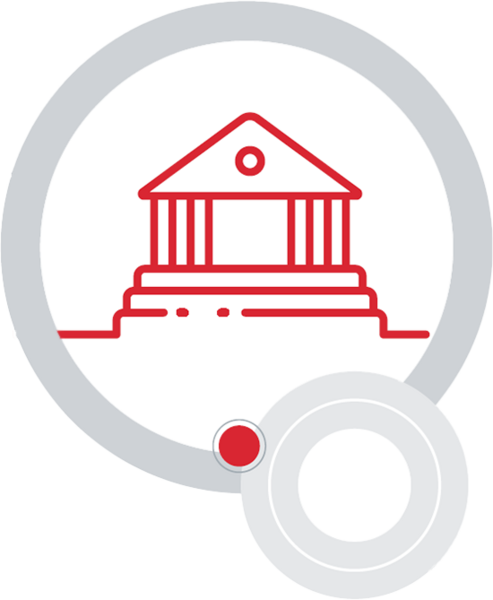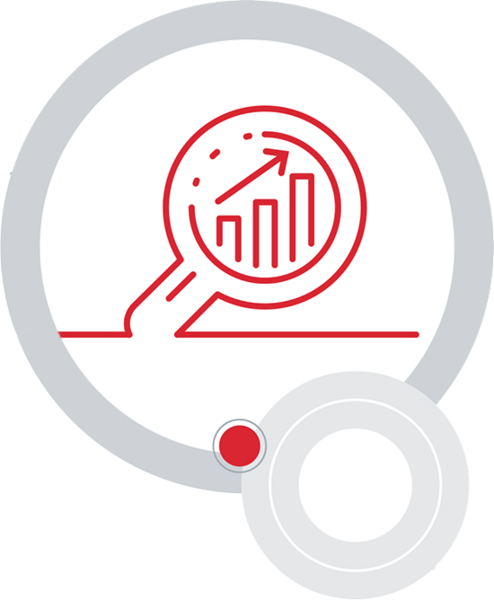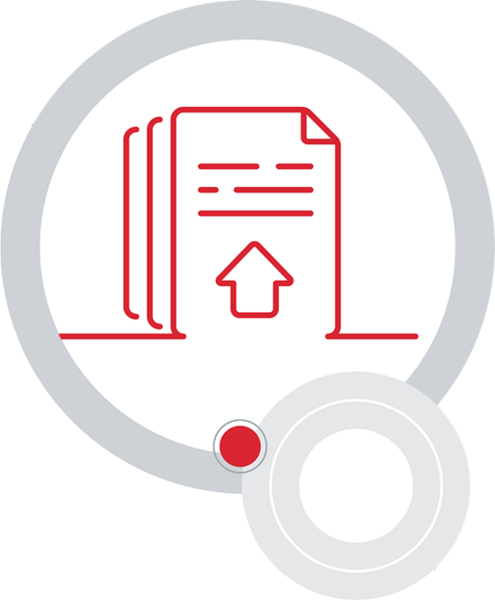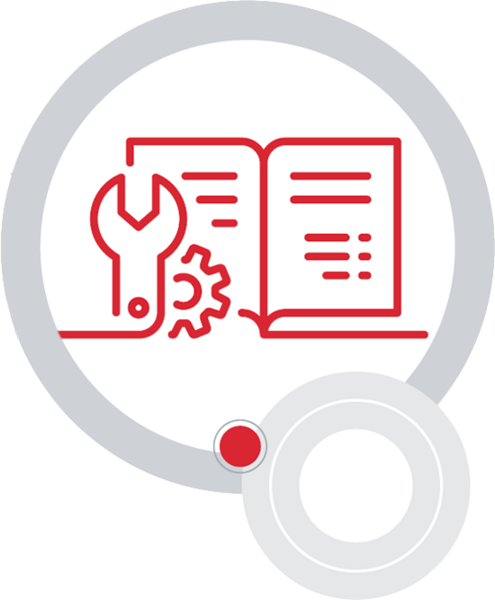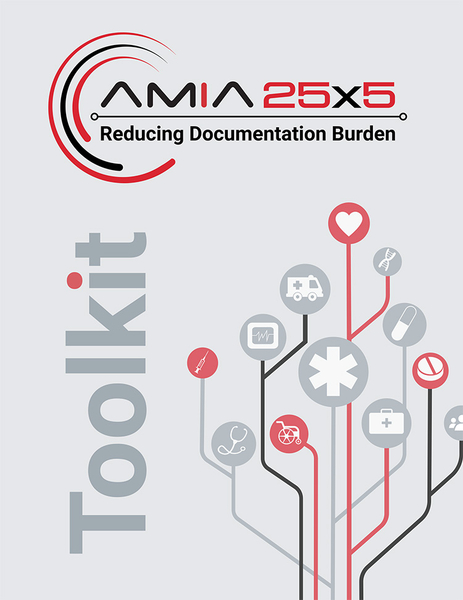Documentation burden is defined as “the stress imposed by the excessive work required to generate clinical records of healthcare-related interactions, occurring as a result of the imbalance between the usability [of] and satisfaction [with] systems of health records keeping with clinical and regulatory demands of entering and consuming health records data.” 1 It is important to note that documentation burden encompasses both information retrieval (to facilitate patient care as well as produce further documentation) and the act of documenting.
The medical community is paying attention to documentation burden and its consequences. While some amount of documentation is necessary for continuity of care and to ensure quality and safety, the current documentation expectations go beyond what is clinically indicated and create undue burden on the clinical providers and staff.
Numerous professional societies recognize documentation burden as a problem and initiated efforts to address this concern. U.S. Surgeon General Vivek Murthy issued an advisory on health care worker burnout in May 2022 that recommended the implementation of strategies and approaches developed by the 25x5 Symposium to reduce administrative burdens.2 The 25x5 Taskforce is carrying forward the effort to reduce the documentation burden experienced by clinicians to 25% of current levels in five years.
AMIA, in partnership with the American Medical Association (AMA), the Association of Medical Directors of Information Systems (AMDIS), and the Alliance for Nursing Informatics (ANI), convened the National Burden Reduction Collaborative (NBRC) in November 2022 that has since identified five priority areas and engaged in ongoing work to advance burden reduction efforts across organizations and key stakeholder groups.
Table of Contents
Why is it Important to Address Documentation Burden?
Documentation requirements accrue from a variety of Organizational, State, and Federal entities. Documentation burden from those requirements that go beyond what is necessary for clinical care is commonly seen by clinicians as one of many underlying reasons for burnout. Three-fourths of pediatricians reported documentation as a major or moderate burden. 3 Information retrieval in the pursuit of supporting documentation may be unnecessarily burdensome if the workflows and systems in place do not support efficiency.
Recent studies have shown that clinicians spend a significant amount of time documenting. 4-7 As a result, there are increased errors, unintended consequences, and less time to have meaningful interactions with patients, their caregivers, and families.7 Further, research links documentation burden to job dissatisfaction,3 stress, and clinician burnout.7 Reducing documentation burden may result in improvements to clinician well-being, safety, quality, and patient experience.
Getting Started
Tackling documentation burden may be a daunting task, particularly as one considers the multitude of stakeholders, regulations, and the complex history that led to the current state of healthcare documentation. While there is no single solution to eliminate documentation burden altogether, progress towards reducing documentation burden can be achieved by just starting – even if small. This Toolkit contains pragmatic strategies and approaches to start, strengthen, and sustain documentation burden reduction initiatives.
About This Toolkit
The AMIA 25x5 Taskforce and Health Professional/Systems Workstream developed this Toolkit to guide organizations through the process of reducing documentation burden. The Toolkit is intended to provide resources related to governance of EHR optimization, implementation of solutions to reduce burden, and measurement of burden reduction. There are varying needs and challenges across settings, and therefore no solution to addressing documentation burden will fit all organizations. Rather, this Toolkit is intended to provide comprehensive guidance to individuals and organizations for a pragmatic approach to documentation burden reduction.
Governance
Why is Identifying a Governance Structure Important?
Governance provides procedural control over a system or a set of processes that involve a variety of stakeholders or managers. Governance ensures appropriate organization, resource allocation, and coordination of efforts to achieve goals and ensure quality, safety, and fiscal stewardship.
Within a governance structure, consensus can be built for process improvement changes. Without a governance structure to form an organized framework to address documentation requirements and efficiency, the process of identifying and implementing opportunities for optimization can evolve into disarray. A single stakeholder’s voice may be disproportionately represented, leading to an imbalance in goals or priorities. These factors may contribute to duplication, inefficiency, and dissipation of effort.
EHRs are extremely efficient at surfacing documentation expectations to clinicians; however, the governing entities surrounding documentation requirements are human and first decide what those requirements are, effecting the magnitude of burden for local facilities or healthcare systems. There are many governance models, some of which may be more successful at a given organization, if for no other reason than they are familiar to that organization. The following are two governance structures to consider as readers initiate documentation burden reduction interventions at their organizations.
Recommended Governance Structure: Shared Governance
Shared governance is a model cited commonly in the literature that can involve patient-facing staff in decision-making, policy development, and operational processes1. Its origins arose in the 1960’s as a way to promote employee engagement. This type of structure can promote accountability, foster cooperation, and leverage innovation through diversity. The model has been used successfully in documentation burden reduction efforts2.
To be effective, a wide range of disciplines with an interest in documentation burden should be represented. Although variable from site to site, the following roles would be important stakeholders to consider: CMIO, CNIO, clinician leaders, Health Information Management, Clinical Documentation Improvement staff, Compliance, Employee Wellness, and Quality & Safety personnel. Multiple groups may be required to focus on specific goals or processes to keep group size manageable. Groups could be organized by specialty/service, discipline, or documentation type. An overarching governance structure or steering committee would define how the groups report and engage with one another. This information should be codified in a charter. Periodic reporting to a steering committee can promote accountability and hardwire the process improvement architecture. Sample documents describing a shared governance infrastructure and charter have been described in the literature3.
Steering Committees
Providing clear guiding principles regarding local documentation expectations would be a critical step for a steering committee. Examples have been published in the literature4. These principles become the guiding criteria against which each suggested change to documentation would be evaluated. While an organization’s philosophy may not align with the examples listed, they provide starting points from which to evolve.
One set of guiding principles could include the extent to which documentation supports:
- Efficient clinical care
- Existing vs best E&M billing guidance
- Patient safety & quality
- Compliance standards (local, national)
- Minimizing or eliminating documentation duplication
- Clinician and/or team well-being
- Team-based care
Rodriguez-Fernandez describe another philosophy of documentation imperatives6:
- Less is more
- Short but sweet
- Avoiding excessive documentation of normal findings
- Focus on abnormal findings
- Maintain histories in one up to date central location
- Reimbursement is focused on medical decision-making
- Agreement on uniform approach to documentation
- Patients can benefit from reading our notes
- Notes can be used for research and patient care
Determining goals would be another critical task for the steering committee and related workgroups. SMART (specific, measurable, attainable, relevant, time-bound) goal setting is a common paradigm in process improvement activities and could apply to this endeavor5. Guiding principles and goals direct the development of measures or scoring systems that could provide a more objective gauge of success (see Metrics section). Measures can be presented through program and executive level monitoring dashboards.
Recommended Governance Structure: Using Existing Governance Structures
Alternatively, existing organization governance structures may be adapted to accommodate documentation reduction goals and priorities. However, appropriate stakeholders must be included. Ideally the governance structure has facility or healthcare system leadership endorsement at a high level as this support promotes accountability. Documentation burden reduction goals can be incorporated into facility or health system strategic planning, particularly as they relate to efficient care and care team well-being.
Engaging End-users
Regardless of governance structure, it is incumbent upon the governing body to ensure high-quality communication to stakeholders and affected patient-facing staff. It is crucial to ensure that staff is informed of efforts to decrease documentation burden. One modality to consider is a periodic electronic newsletter that highlights goals achieved such as clicks saved, requirements discarded, or documentation avoided. Additionally, the communication may highlight how clinician input was garnered and used to guide changes that affect burden, demonstrating that the end users were heavily engaged in the process. The governance infrastructure would be tasked with fostering and communicating the culture change needed to support the new philosophy of documentation.
Documenting The Work
Recordkeeping and data collection are among the administrative details that require organization and management. Items such as a charter, goals, guiding principles, agendas, minutes, and rudimentary data collection requires cataloguing to guide, maintain, and demonstrate progress toward agreed upon goals. Less formalized efforts may be acceptable for projects with limited scopes. However, ongoing process improvement initiatives, such as documentation burden reduction, would benefit from a more formalized process as they represent a significant culture change for most organizations.
Conclusion
In conclusion, whether a governance structure must be developed de novo or an existing governance framework adapted for documentation burden reduction purposes, the overarching priority is to embark on the journey under the guidance of a multi-disciplinary group with authority to assess need and direct change. A governance structure will develop policy, guiding principles, goals, and measurements of success, and prioritize projects to meet those identified priorities. The goal is to review existing documentation practices for opportunities to reduce burden and ensure that future documentation is streamlined to avoid unnecessary care team workload. While policy influences documentation requirements, and IT systems can facilitate documentation, it is clear from a review of the literature that the majority of this change management work will fall to the individual facilities and healthcare systems.
Initiatives
While the focus on documentation burden reduction is relatively recent in the scheme of healthcare delivery, organizations have undertaken and written about initiatives to address this problem for longer. Indeed, the number of initiatives to target and reduce documentation burden experienced by clinicians is growing.
In order to inventory existing documentation burden reduction activities, the AMIA 25x5 Task Force performed a literature search and distributed a national survey, from August 10, 2022 to September 9, 2022, requesting health organizations describe how they have approached reducing clinician documentation burden. The literature search identified more than thirty organizations which had published on their initiatives.
Eighteen organizations responded to the 2022 survey and submitted details on initiatives being implemented or completed. Themes are summarized and further details are provided in the table below.
Generally speaking, the Physician/APP initiatives focus on reducing note bloat and the Nurse initiatives focus on reducing flowsheet documentation.
The Task Force received 12 provider responses focusing on using standardized note templates to reduce duplication and length while assuring that reimbursement requirements were met. Many organizations used the 2021 ambulatory E&M changes as an opportunity to streamline documentation requirements. The Task Force received seven responses focused on reducing and streamlining admission nursing documentation.
Additionally, some initiatives focused on reducing documentation quantity, others addressed the process of documenting. While interventions with scribes or ambient voice recognition to reduce time spent documenting are laudable, we believe documentation burden derives not only from time spent documenting, but also the cognitive burden and time spent formulating ideas that become the documentation, including chart review, documenting, and reviewing past documentation. Efforts to reduce time spent documenting must be paired with efforts to reduce the total quantity of documentation, as well.
Of note, organizational efforts to address documentation burden found during the Task Force’s research were all focused on documentation creation, not on information retrieval. Since both aspects of documentation may contribute to burden, an organization may want to phase approaches to address documentation burden in its totality. Information retrieval may be addressed through workflow analysis, re-engineering of data visualization, and an enhanced alignment of visibility of information required for clinical care and documentation.
Below are details of the information received from the 2022 survey, which organizations may choose to emulate or use as a starting point to develop their own initiatives.
| Timeline | Keyword/Themes | Intervention Description | Metrics/Outcomes |
|---|---|---|---|
| Physicians/APPs | |||
| Fall 2019 - January 2021 | - Clinician satisfaction - Note bloat - Reduce burden - Reimbursement |
Reduced redundancies in notes by creating common documentation templates and removed non-essential content to align with outpatient E&M coding changes. Considered what was essential and billing/coding implications. | Template used in 31% of visits with reduction in character length of note by 33%. |
| - Standard documentation | Updated note templates using new guidelines and using newer EHR functionality. | Reduced character length of IP and OP notes by about 50%. | |
| Summer 2022 (ongoing) |
- Provider efficiency - Clinician satisfaction |
New organization started with a mission and in an effort to minimize documentation and cognitive load on the provider. This was focus when designing content and workflows from the beginning. | Positive feedback received from clinicians. |
| Winter 2021 (ongoing) |
- Procedural note - Standard documentation - Reduced time - Clinician satisfaction - Compliance |
Improved and streamlined the documentation of procedural sedation in the emergency department. Created template that uses branching logic for moderate sedation that captured data more discreetly versus free-text. Published |
Improved provider satisfaction. |
| 2019- ongoing | - Clinician satisfaction - Note bloat - Burnout - Reduce time |
Developed provider-efficiency program to assist providers in becoming more efficient. From this program, a Note Bloat Task Force was created to focus on reducing burnout related to documentation by streamlining note documentation for outpatient new and returning patients. Will base guidelines on 2021 CMS guidelines. Using EHR vendor provider time/efficiency data to guide target areas and measure outcomes. | The task force is new and data/outcomes are still be gathered. |
| 2021-2022 | - Note bloat - Reimbursement |
Used vendor recommendations for reducing note bloat in ambulatory setting in concurrence with billing changes in 2021. This was achieved by creating new templates. | None stated. |
| 2018 | - Standard documentation | Created a standard note template for inpatient providers. Notes are now more consistent, and many providers now use problem-oriented charting. | Positive feedback from some providers (hospitalists), but specialists did not change practice. |
| 2022 | - Burnout - Clinician satisfaction - Virtual scribe |
Trialed a six-month virtual scribe pilot for 25 providers. Learned that there is not a single solution to solve burden, it must be a multi-module approach. | Pilot was not successful in reducing burden, but it did help identify documentation needs among different provider types. |
| - Scribe - Standard documentation |
Created an in-person and virtual scribe program, updated note templates, clarified regulatory requirements, and provided training. | ||
| - Scribe | Conducted a pilot of ambient dictation and scribing. | Saw a time reduction in notes. | |
| Nurses | |||
| 2017 (ongoing) |
- Disaster documentation - Admission documentation - Reduce burden |
Consolidated plans of care, education, and documentation into a single report in 2017. As a response to COVID response, admission documentation and flowsheets were reduced, and virtual nursing was trialed. Now working on imbedding charges into usable workflow. | Reduced admission documentation by 50%. |
| 2019 (ongoing) |
- Reduce burden - Clinician satisfaction - Admission documentation - Flowsheets |
Used Jane Engelbreit and UCHealth Project Joy for guidance to streamline nursing documentation in navigators (admission, discharge, transfer) and required documentation. Initiated from COVID response and adapted simplified documentation for post-COVID state. | Still measuring outcomes in time spent and clicks used by nursing. |
| 2021 (ongoing) |
- Clinician satisfaction - Reduce burden - Admission documentation |
Reviewed admission navigator to identify opportunities for removing duplicative and unnecessary documentation. Changes have been slow due to resources. | Not defined yet. |
| - Clinician satisfaction - Reduce burden - Admission documentation - Flowsheets - Reduce time |
Updated nursing flowsheets, admission navigator, I&Os, and other nursing documentation tools | Experienced an 18.5% decrease in time in EHR, 7-12% decrease of time in flowsheets, and 88-90% decrease in steps to complete reassessment documentation. Published |
|
| - Standard documentation - Admission documentation |
Standardized tools and developed a nursing-admission history data set. | ||
| Physicians/APPs/Nurses | |||
| 2021-2022 | - Patient Safety - Reduce burden |
Moved from mix of paper documentation and electronic documentation to only electronic documentation. | None stated. |
| - Reduce burden |
Project called Working to Eliminate Excessive Documentation (WEED) to reduce all forms of excessive documentation. | Demonstrated hours saved by providers. | |
Metrics
As an organization embarks on efforts to reduce documentation burden, it is important to establish goals for the interventions and how the efforts will be assessed. Establishing goals should happen early in the planning process and be approved by the governance structure developed. Ascertaining that goals put in place are measurable and assuring that the burden of measurement does not outweigh the benefits of the goals are critical for success.
Measuring documentation “burden” may take the form of simple, EHR-derived time measures to complex algorithms to assess the experience of the user, as is evaluated with measures of burnout. Organizations may want to establish plans that evolve from measuring documentation duration/length to one that measures burden of the experience. It is important to remember the goal is to reduce total documentation burden, not only reduce the time it takes to document or the time spent by one member of the team. No matter the measures, it will be important to assess them before, during, and sometime after the intervention to allow the organization to determine the effect and sustainability of the designed intervention.
Process measures are variables that assess how the parts and the process of the intervention are performing. Many EHR vendors supply these measures (collected in the background) for individual users, as well as aggregated across groups of users (e.g., a Department). These measures are useful in understanding how the implementation is progressing, and may give an early indicator as to the success on the desired outcome measures. Examples of Process Measures in reducing documentation burden are:
- Time spent documenting
- Character length of documentation
- Click count
- Number of screens necessary to view to retrieve relevant information
- Type of note content generated – de novo, copy and paste, smart tool generated
- Percent of note that flows in automatically from other processes
Outcome measures are those variables that assess the overall effect of the intervention, and thus the ultimate goal of reducing documentation burden. Changes to these measures may not be immediately apparent and the sustainability of change(s) due to the intervention must be evaluated over time. Frequently, interventions need to be repeated at certain time intervals, if not continuously, to maintain sustainability of the outcome. Examples of Outcome Measures in reducing documentation burden are:
- Time of day during which documentation occurs (e.g., work outside of work, “pajama time”)
- Cognitive load (e.g., screen switching, clinician survey)
- Burnout (e.g., Maslach inventory, Professional Fulfillment Index, single-item intent to leave)
Balancing measures are those which assess whether a change to one aspect of clinical work affects another area, often unintentionally. It is important to keep these in mind so not to inadvertently make one area of the job better by reducing documentation burden, while making another area worse. Doing so would, ultimately, result in no change to overall outcome measures. Examples of Balancing Measures in reducing documentation burden are:
- Time of day during which documentation occurs
- Percent of encounters/notes closed on the day of service
Demonstrating effect using the above measures will require assessing the measures and presenting them in easily grasped formats, such as the run chart, where the measure is plotted over time and the timing of various interventions is indicated. This chart may plot confidence intervals as well, although that may not be necessary for the level of precision needed for this type of practice improvement work. Run charts, tables, or other data visualization methods should be made available to project and executive leadership in the form of dashboards or key performance indicators. Project leadership will use these data to identify successes and challenges, make changes to interventions, and demonstrate a return on investment. Organization leadership will use the impact data to determine how to resource future interventions and demonstrate success both internally and externally.
Future Directions
While an important goal for any healthcare organization, undertaking documentation burden reduction initiatives requires significant effort by stakeholders throughout the healthcare delivery system. To successfully implement and sustain documentation burden reduction efforts, in addition to the above recommendations, stakeholders should consider the use of change-management approaches and strategies.
While visually re-organizing information, updating note templates, changing flowsheet rows, or implementing documentation support may seem mechanical, the hesitancy to change, the disbelief in organizational change, and the tendency to revert to engrained ways of documenting are strong drivers which may derail efforts to reduce documentation.
The change management process, related not only to the technical but also the human nature of documentation, should not be ignored. Some common change management models are those of John Kotter, TeamSTEPPS, ADKAR, and Plan-Do-Study-Act (PDSA) cycles. Ongoing organizational support for these efforts are required for long-lasting behavioral change by healthcare practitioners.
Finally, the actions healthcare institutions and providers can take is the focus of this Toolkit, significant and sustained documentation burden reduction can only be achieved through the partnership between these entities, regulatory bodies, and health IT vendors. Much of the administrative documentation that occurs – prior authorizations, condition attestations, receipt acknowledgement – can only be understood, dismantled, and reimagined with regulatory changes.
Additionally, EHR vendors play a role in minimizing the burden of information retrieval and synthesis, eliminating duplicate documentation, complying with regulatory requirements in a non-interruptive manner, and supporting team-based care and documentation. To this end, the AMIA 25x5 Task Force continues to address each of these arms individually and together as part of the larger goal to reduce documentation burden. Next steps include building an online learning community that provides a forum and opportunity to share documentation burden reduction initiatives and their implementation.
Reference
Section 1
Back to Section 1: Introduction
- Rossetti, S.C., et al. 25x5 Symposium Drives Ongoing Efforts to Reduce Documentation Burden on U.S. Clinicians: Final Summary Report. 2021 Dec.
- Murthy VH. Addressing Health Worker Burnout.
- Frintner MP, Kaelber DC, Kirkendall ES, Lourie EM, Somberg CA, Lehmann CU. The Effect of Electronic Health Record Burden on Pediatricians’ Work-Life Balance and Career Satisfaction. Appl Clin Inform. 2021 May;12(3):697–707.
- Lindsay MR, Lytle K. Implementing Best Practices to Redesign Workflow and Optimize Nursing Documentation in the Electronic Health Record. Appl Clin Inform. 2022 May;13(03):711–9.
- Gesner E, Gazarian P, Dykes P. The Burden and Burnout in Documenting Patient Care: An Integrative Literature Review. Stud Health Technol Inform. 2019 Aug 21;264:1194–8.
- Collins S, Couture B, Kang MJ, Dykes P, Schnock K, Knaplund C, et al. Quantifying and Visualizing Nursing Flowsheet Documentation Burden in Acute and Critical Care. AMIA Annu Symp Proc. 2018;2018:348–57.
- Moy AJ, Schwartz JM, Withall J, Lucas E, Cato KD, Rosenbloom ST, et al. Clinician and Health Care Leaders’ Experiences with—and Perceptions of—COVID-19 Documentation Reduction Policies and Practices. Appl Clin Inform. 2021 Oct;12(5):1061–73.
Section 2
- Barden, A. M., Griffin, M. T., Donahue, M., & Fitzpatrick, J. J. (2011). Shared governance and empowerment in registered nurses working in a hospital setting. Nursing administration quarterly, 35(3), 212–218.
- Russell, Cynthia K; Floyd, Claire T; Ledwell, Lisa; Morgan, Sarah.
- Journal of Informatics Nursing; Sewell Vol. 5, Iss. 2, (2020): 8-12.
- Admission History A Toolkit for Reducing Documentation Burden: Nursing Knowledge: Big Data Science.
- A Community Hospital’s Approach to Alleviate Documentation Burden: Journal of Informatics Nursing Volume 5, number 2.
- Doran, G. T. (1981). “There’s a S.M.A.R.T. Way to Write Management’s Goals and Objectives”, Management Review, Vol. 70, Issue 11, pp. 35-36.
- Rodríguez-Fernández JM, Loeb JA and Hier DB (2022) It’s time to change our documentation philosophy: writing better neurology notes without the burnout.
- Front. Digit. Health 4:1063141
Section 4
